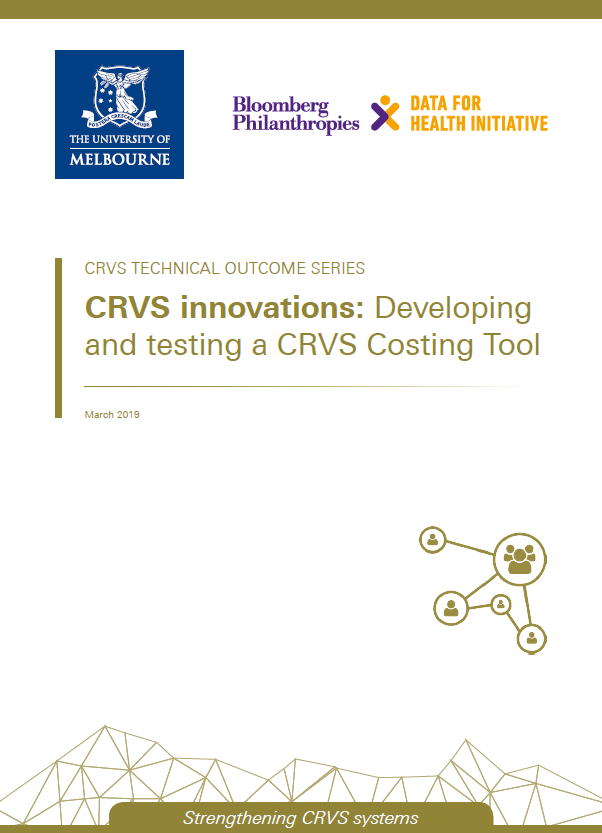The purpose of the CRVS Costing Tool, developed by Swiss Tropical and Public Health Institute and the University of Melbourne, is to help you to determine the costs of implementing CRVS systems. The tool was designed for officials from institutions related to CRVS systems with an understanding of CRVS operations in the country and the different activities required to register vital events and to produce vital statistics.Bilateral and multilateral organizations working on CRVS in countries could also benefit from using this tool as it will help them identify the cost drivers, inefficiencies and bottlenecks in the system.
Costing CRVS systems allows to:
- Estimate the costs of CRVS systems.
- Identify key cost drivers and factors that impact the costs and efficiency of CRVS systems.
- Estimate total budget requirements for CRVS activities across countries.
- Compare the costs of CRVS systems within and between countries.
The tool automatically produces the following outputs:
- Total program costs for baseline year by activity and input type
- Average costs per registration of death and birth
- Key drivers of costs
The information collected will be used to:
- Strengthen budget preparations and justifications in the annual budgeting and planning process; and
- Assist in CRVS system implementation - measuring efficiency while identifying inefficiencies.
The Excel CRVS Costing Tool is formulated specifically to calculate the cost of CRVS activities at each level of the system. You can use this tool to calculate the costs or budget of the entire country or of a selected sample. The tool assumes a systems perspective for the costing study where only costs incurred by the CRVS system are included and other costs such as household out-of-pocket expenses associated with death registration are excluded.
The CRVS Costing Tool estimates total costs of CRVS by aggregating the costs of the different inputs. Average/unit costs are then estimated by dividing the total costs by the units of outputs (i.e. number of deaths registered) produced. It can be customized to the country’s context and covers all aspects of a CRVS system, including start-up costs, training costs, community-level service delivery costs, as well as governance, supervision, and management costs at all administrative levels.
Additionally, the tool has a budgeting and a modelling component. The former can be used to estimate budgets for CRVS systems, whereas the latter allows to model different CRVS implementation scenarios.


